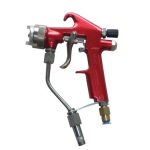Author: doPowder
Application and advancement of anti-slip coatings
Application of non-slip floor coating Non-slip floor coating serves as a functional architectural coating with significant applications in various settings. These include warehouses, workshops, running tracks, bathrooms, swimming pools, shopping centers, and activity centers for the elderly. Additionally, it is used on pedestrian bridges, stadiums (fields), ship decks, drilling platforms, offshore platforms, floating bridges and high-voltage transmission line towers as well as microwave towers. In these scenarios where slip resistance is crucial for safety purposes, applying anti-slip paint can beRead More …
How to remove powder coat from aluminum wheels
To remove powder coat from aluminum wheels, you can follow these steps: 1. Prepare the necessary materials: You will need a chemical stripper, gloves, safety goggles, a scraper or wire brush, and a hose or pressure washer. 2. Safety precautions: Make sure to work in a well-ventilated area and wear protective gear to avoid any contact with the chemical stripper. 3. Apply the chemical stripper: Follow the instructions on the product and apply the chemical stripper to the powder-coated surfaceRead More …
What is the difference between paint and coating?
The difference between paint and coating The difference between paint and coating lies in their composition and application. Paint is a type of coating, but not all coatings are paints. Paint is a liquid mixture consisting of pigments, binders, solvents, and additives. Pigments provide color and opacity, binders hold the pigments together and adhere them to the surface, solvents help with application and evaporation, and additives enhance various properties such as drying time, durability, and resistance to UV light orRead More …
The future development trends of polyethylene powder coating
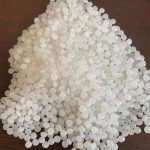
Polyethylene powder is a very important synthetic material, which is a polymer compound synthesized from ethylene monomer and widely used in the manufacture of plastic products, fibers, containers, pipes, wires, cables and other fields. With the continuous introduction of new materials and new technologies, the application of polyethylene powder is also expanding. The future development trends will be as follows: 1. Green and environmental protection trend: With the increasing awareness of environmental protection, the development trend of green and environmentalRead More …
How to reduce exposure of workers to hazards in powder coating
How to reduce exposure of workers to hazards when you use powder coating powder Elimination Choose TGIC-free powder coating powder which are readily available. Engineering controls The most effective engineering controls for reducing worker exposure are booths, local exhaust ventilation and automation of the powder coating process. In particular: application of powder coatings should be performed in a booth where practicable local exhaust ventilation should be used when conducting powder coating activities, during filling of hoppers, when reclaiming powder andRead More …
What is the HS code of polyethylene powder coating?

Introduction of HS code of polyethylene powder coating HS CODE is the abbreviation of “Harmonized Commodity Description and Coding System”. The Harmonization System Code (HS-Code) is formulated by the International Customs Council and the English name is The Harmonization System Code (HS-Code). The basic elements of customs and commodity entry and exit management agencies of various countries to confirm commodity categories, conduct commodity classification management, review tariff standards, and inspect commodity quality indicators are the common identity certificates for importRead More …
What is the CN number of polyethylene powder?
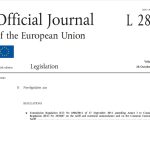
The CN number of polyethylene powder: 3901 Polymers of ethylene, in primary forms: 3901.10 Polyethylene having a specific gravity of less than 0,94: —3901.10.10 Linear polyethylene —3901.10.90 Other 3901.20 Polyethylene having a specific gravity of 0,94 or more: —-3901.20.10 Polyethylene in one of the forms mentioned in note 6(b) to this chapter, of a specific gravity of 0,958 or more at 23 °C, containing: 50 mg/kg or less of aluminium, 2 mg/kg or less of calcium, 2 mg/kg orRead More …
White Powder Coating Powder For Sale
We have the following white powder coating powder for sale in stock. We also can match the color accurately according to your sample. This white color powder coat can be desinged to smooth matt, wrinkle or sand texture. RAL 9001 Cream RAL 9002 Grey white RAL 9003 Signal white RAL 9010 Pure white RAL 9016 Traffic white White Wrinkle Texture White Sand Texture White Smooth Matt For other types of white powder coating powder, please contact us .
How Long Does Powder Coating Powder Last
How Long Does Powder Coating Powder Last Shelf life of powder coating powder The powder coating can be stored for 1 year when the packaging is intact and the warehouse is kept ventilated and cool. Longevity of Powder Coat The weather resistance of ordinary powder coatings is generally 2-3 years, and good quality for 3-5 years. For super weather resistance, fluorocarbon resin powder coatings are used, and the weather resistance can exceed 15-20 years.
How To Use Thermoplastic Powder Coatings
The using method of thermoplastic powder coatings mainly include: Electrostatic spraying Fluidized bed process Flame Spray technology Electrostatic Spraying The basic principle of this process is that the electrostatic powder is guided to the surface of the metal workpiece under the combined action of compressed air and electric field when passing through the gap between the spray gun and the grounded metal workpiece. The charged powder adheres to the surface of the grounded metal workpiece, then is melted in anRead More …
Thermoplastic Powder Coatings Types
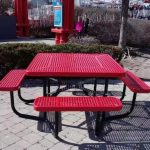
Thermoplastic powder coatings types mainly have the following types: Polypropylene Polyvinyl chloride (PVC) Polyamide (Nylon) Polyethylene (PE) Advantages are good chemical resistance, toughness and flexibility, and can be applied to thick coatings. The disadvantages are poor gloss, poor leveling and poor adhesion. The specific introduction of thermoplastic powder coating types: Polypropylene powder coating Polypropylene powder coating is a thermoplastic white powder with a particle diameter of 50~60 mesh. It can be used in anti-corrosion, painting and other fields. It isRead More …
Application of Zirconium Phosphate in Coatings
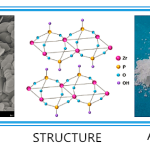
Application of Zirconium Phosphate in Coatings Due to its special properties, zirconium hydrogen phosphate can be added to resins, PP, PE, PVC, ABS, PET, PI, nylon, plastics, adhesives, coatings, paints, inks, epoxy resins, fibers, fine ceramics and other materials. High temperature resistance, flame retardant, anti-corrosion, scratch resistance, increased toughness and tensile strength of reinforced materials. Mainly have the following advantages: Enhance mechanical strength, toughness and tensile strength Can be used at high temperature to enhance flame retardancy Good plasticizing abilityRead More …
What is Polyethylene Paint

Polyethylene Paint, also known as plastic coatings, are coatings applied to plastic materials. In recent years, plastic coatings have been widely used in mobile phone, TV, computer, automobile, motorcycle accessories and other fields, such as automotive exterior parts and interior parts. Components, plastic coatings are also widely used in sports and leisure equipment, cosmetic packaging, and toys. Thermoplastic acrylate resin coatings, thermosetting acrylate-polyurethane resin modified coatings, chlorinated polyolefin modified coatings, modified polyurethane coatings and other varieties, among which acrylic coatingsRead More …
What is High Density Polyethylene
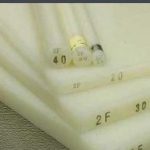
High density polyethylene (HDPE), white powder or granular product. Non-toxic, tasteless, crystallinity of 80% to 90%, softening point of 125 to 135°C, use temperature up to 100°C; hardness, tensile strength and ductility are better than low density polyethylene; wear resistance, electrical Good insulation, toughness and cold resistance; good chemical stability, insoluble in any organic solvent at room temperature, corrosion resistance of acid, alkali and various salts; thin film permeability to water vapor and air, water absorption Low; poor aging resistance,Read More …
What is the Production Process of Polyethylene
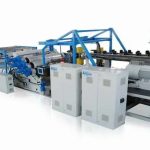
The production process of polyethylene can be divided into: High pressure method, high pressure method is used to produce low density polyethylene. Medium pressure Low pressure method. As far as the low pressure method is concerned, there are slurry method, solution method and gas phase method. The high pressure method is used to produce low density polyethylene. This method was developed early. The polyethylene produced by this method accounts for about 2/3 of the total output of polyethylene, but withRead More …
What Is Modified Polyethylene ?
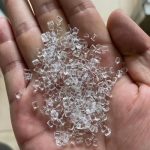
What Is Modified Polyethylene ? The modified varieties of polyethylene mainly include chlorinated polyethylene, chlorosulfonated polyethylene, cross-linked polyethylene and blended modified varieties. Chlorinated Polyethylene: A random chloride obtained by partially replacing hydrogen atoms in polyethylene with chlorine. Chlorination is carried out under the initiation of light or peroxide, and is mainly produced by aqueous suspension method in industry. Due to the difference in molecular weight and distribution, branching degree, chlorination degree after chlorination, chlorine atom distribution and residual crystallinity ofRead More …
Physical And Chemical Properties of Polyethylene Resin

Physical And Chemical Properties of Polyethylene Resin Chemical Properties Polyethylene has good chemical stability and is resistant to dilute nitric acid, dilute sulfuric acid and any concentration of hydrochloric acid, hydrofluoric acid, phosphoric acid, formic acid, acetic acid, ammonia water, amines, hydrogen peroxide, sodium hydroxide, potassium hydroxide, etc. solution. But it is not resistant to strong oxidative corrosion, such as fuming sulfuric acid, concentrated nitric acid, chromic acid and sulfuric acid mixture. At room temperature, the above-mentioned solvents will slowlyRead More …
What Is General Properties of Polyethylene Resin
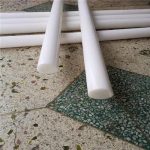
General Properties of Polyethylene Resin Polyethylene resin is a non-toxic, odorless white powder or granule, milky white in appearance, with a wax-like feel, and low water absorption, less than 0.01%. The polyethylene film is transparent and decreases with increasing crystallinity. The polyethylene film has low water permeability but high air permeability, which is not suitable for fresh-keeping packaging but suitable for moisture-proof packaging. It is flammable, with an oxygen index of 17.4, low smoke when burning, a small amount ofRead More …
Classification of Polyethylene
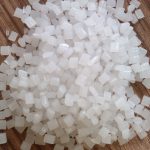
Classification of polyethylene Polyethylene is divided into high density polyethylene (HDPE), low density polyethylene (LDPE) and linear low density polyethylene (LLDPE) according to the polymerization method, molecular weight and chain structure. LDPE Properties: tasteless, odorless, non-toxic, dull surface, milky white waxy particles, density about 0.920 g/cm3, melting point 130℃~145℃. Insoluble in water, slightly soluble in hydrocarbons, etc. It can withstand the erosion of most acids and alkalis, has low water absorption, can still maintain flexibility at low temperatures, and hasRead More …
Brief Introduction of Polyethylene Resin
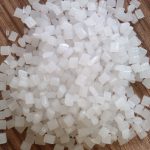
Brief Introduction of Polyethylene Resin Polyethylene (PE) is a thermoplastic resin obtained by polymerizing ethylene. In industry, copolymers of ethylene with small amounts of alpha-olefins are also included. Polyethylene resin is odorless, non-toxic, feels like wax, has excellent low temperature resistance (minimum operating temperature can reach -100~-70°C), good chemical stability, and can resist most acid and alkali erosion (not resistant to oxidation nature acid). It is insoluble in common solvents at room temperature, with low water absorption and excellent electricalRead More …
What Is Acrylic Powder Coatings
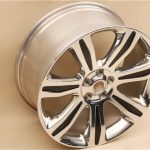
Acrylic powder coating powder have excellent decorative properties, weather resistance, and pollution resistance, and have high surface hardness. Good flexibility. But the price is high and the corrosion resistance is poor. Therefore, European countries generally use pure polyester powder (carboxyl-containing resin, cured with TGIC); (hydroxyl-containing polyester resin is cured with isocyanate) as a weather-resistant powder coating. Composition Acrylic powder coatings are composed of acrylic resins, pigments and fillers, additives and curing agents. Types Due to the different functional groups containedRead More …
Powder Coating Coverage Calculation
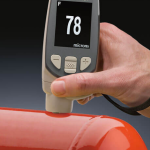
Powder Coating Coverage is very important to factor in the actual transfer efficiency that you will achieve. Estimators often find themselves scrambling to purchase more powder by not factoring in the correct transfer efficiency percentage.To evaluate the actual transfer efficiency of powder coating is very important. The following coverage table is helpful in estimating the amount of powder needed to coat a given amount of surface area. Theoretical coverage formulation Please note that the coverage of powder coating in theRead More …
Munsell Color Chart, Munsell Catalogue
Munsell Color Chart, Munsell Catalogue
Sublimation Transfer Process
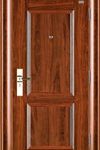
In order to apply the Sublimation Transfer Process , the following equipment and materials are required . A Special transfer equipment A Special sublimation powder coating powder to be sprayed and cured in a Coating Unit. Heat Transfer Paper or Film ( paper or plastic film carrying the desired effect printed with special sublimation inks. Working Process 1.Coating process: Using a sublimation powder coating,coating process in a standard coating unit consists of three different steps: pretreatment ,spraying powder,curing.The coating layerRead More …
Munsell Color System Description
Munsell Color System Description The Munsell color system was first established by the American painter and art teacher Albert H. Munsell around 1900, so it was named “Munsell color system”. The Munsell color system consists of five basic colors—red (R), yellow (Y), green (G), blue (B), and purple (P), plus five intermediate colors—yellow-red (YR). ), yellow-green (YG), blue-green (BG), blue-violet (BP), and red-violet (RP) as a reference. Each hue is subdivided into four colors, represented by the numbers 2.5, 5,Read More …
Why and How To Recoat Powder Coating
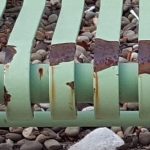
Recoat Powder Coating Applying a second coat of powder is the common approach to repair and reclaim rejected parts. However, the defect should be carefully analyzed and the source corrected before recoating. Do not recoat if the reject is caused from a fabrication defect, poor quality substrate, poor cleaning or pretreatment, or when the thickness of two coats together will be out of tolerance. Also, if the part is rejected due to undercure, it merely needs to be rebaked atRead More …
Plastic Terminology – English abbreviation AND full English name
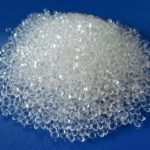
Plastic Terminology – English abbreviation AND full English name Abbreviation Full Name AAS Acrylonitrile-Bcry ate-styrene opolymer ABS Acrylonitrile-butadiene-styrene ALK Alkyd resin AMMA Acrylonitrile-methylmethacrylate copolymer AMS Alpha methyl styrene AS Acrylonitrile-styrene copolymer(see SAN) ASA Acrylonitrile styrene-acrylate copolymer(AAS) BMC Bulk moulding compound CA Cellulose acetate CAB Cellulose acetate butyrate CAP Cellulose acetate propionate CF Casein formaldehyde resin CFE Polychlorotrfluoroethylene(see PCTFE) CM Chlorinated polyethylene(see CPE) CMC Carboxymethyl cellulose CN Cellulose nitrate COPE Polyether ester elastomer CP Cellulose propionate(CAP) CPE Chlorinated polyethylene(PE-C) CPVC Chlorinated polyvinyl Chloride(PVC-C) CS Casein plastics CSM &cspr Chorosulfonated polyethylene CTA Cellulose triacetate DMC Dough moulding tompound E/P Ethylene propylene copolymer CA-MPR Elastomer alloy melt processable rubber EA-TPV Elastomer alloy thermoplastic vulcanizate EC Ethylene cellulose EEA Ethylene ethylacrylate copolymer EP Epoxide or epoxy(cured) EPDM Ethylene propylene diene terpolymer EPS Expandable polystyrene ETFE Ethylene/tetrafluoroethylene EVA Ethylene vinyl accetate copolymerRead More …
Eliminating Orange Peel During Powder Coating
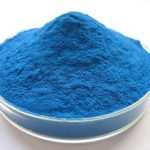
Achieving the right amount of electrostatic powder paint on the part is very important for durability reasons as well as eliminating orange peel. If you spray too little powder on the part, you will most likely end up with a grainy texture to the powder also known as “tight orange peel.” This is because there was not enough powder on the part for it to flow-out and create a uniform coating. Besides the poor aesthetics of this, the part willRead More …
Paint Over Powder Coat – How to paint over powder coat
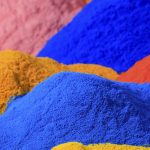
Paint over powder coat – How to paint over powder coat How to paint over powder coat surface – conventional liquid paint will not stick to powder coated surfaces. This guide show you the solution of painting over powder coated surface for both indoors and outdoors. Firstly,All surfaces must be clean, dry and free from anything that will interfere with the adhesion of the materials to be applied.Wash the powder coated surface to remove loose and failing material by scraping orRead More …
- 1
- 2

